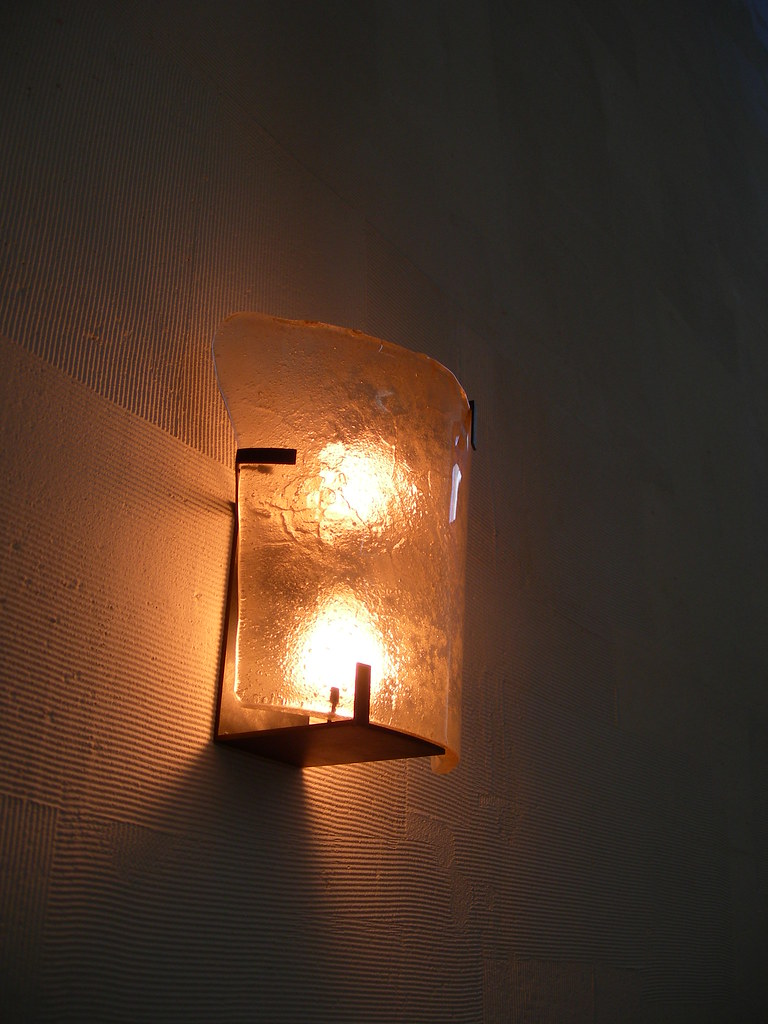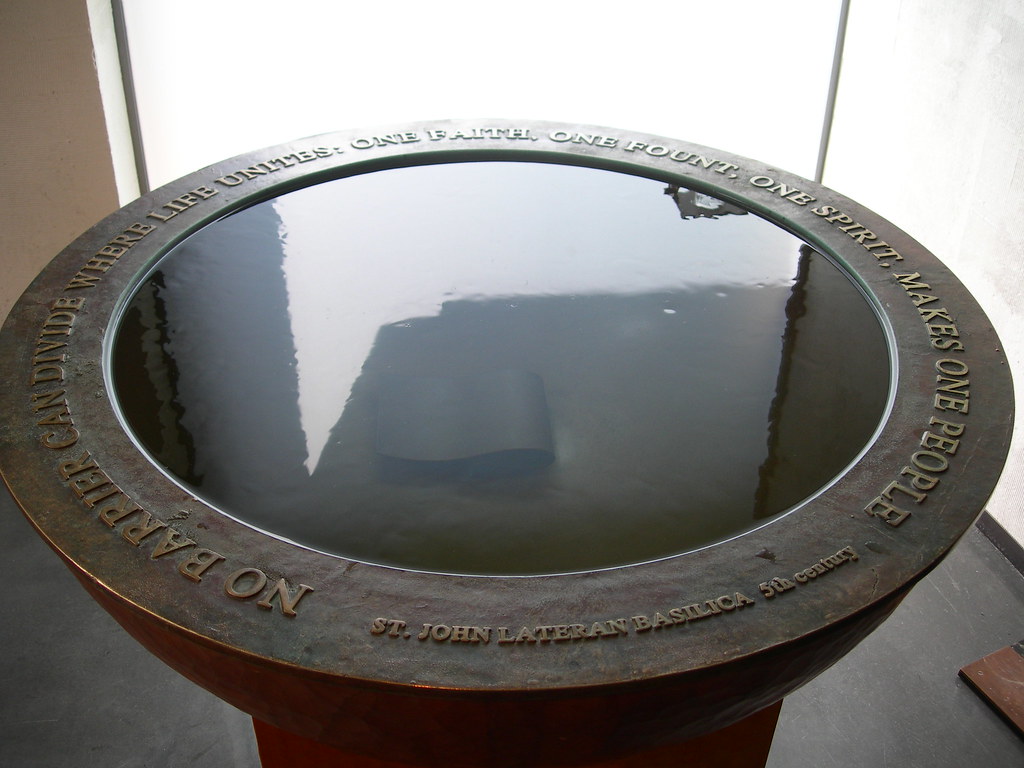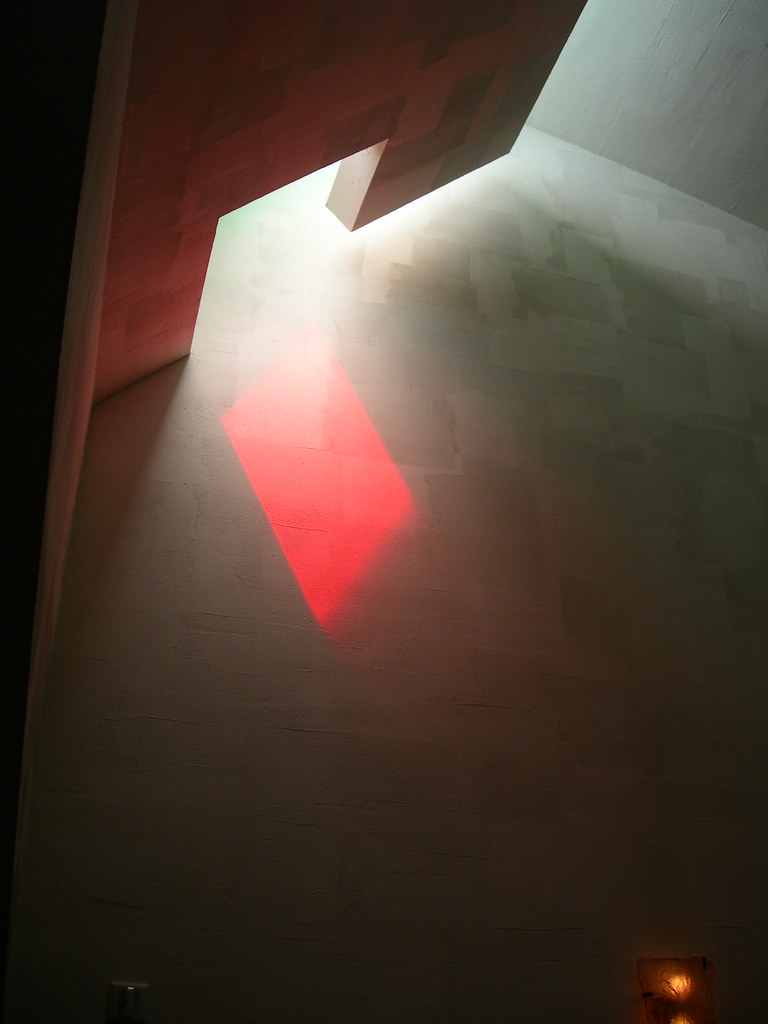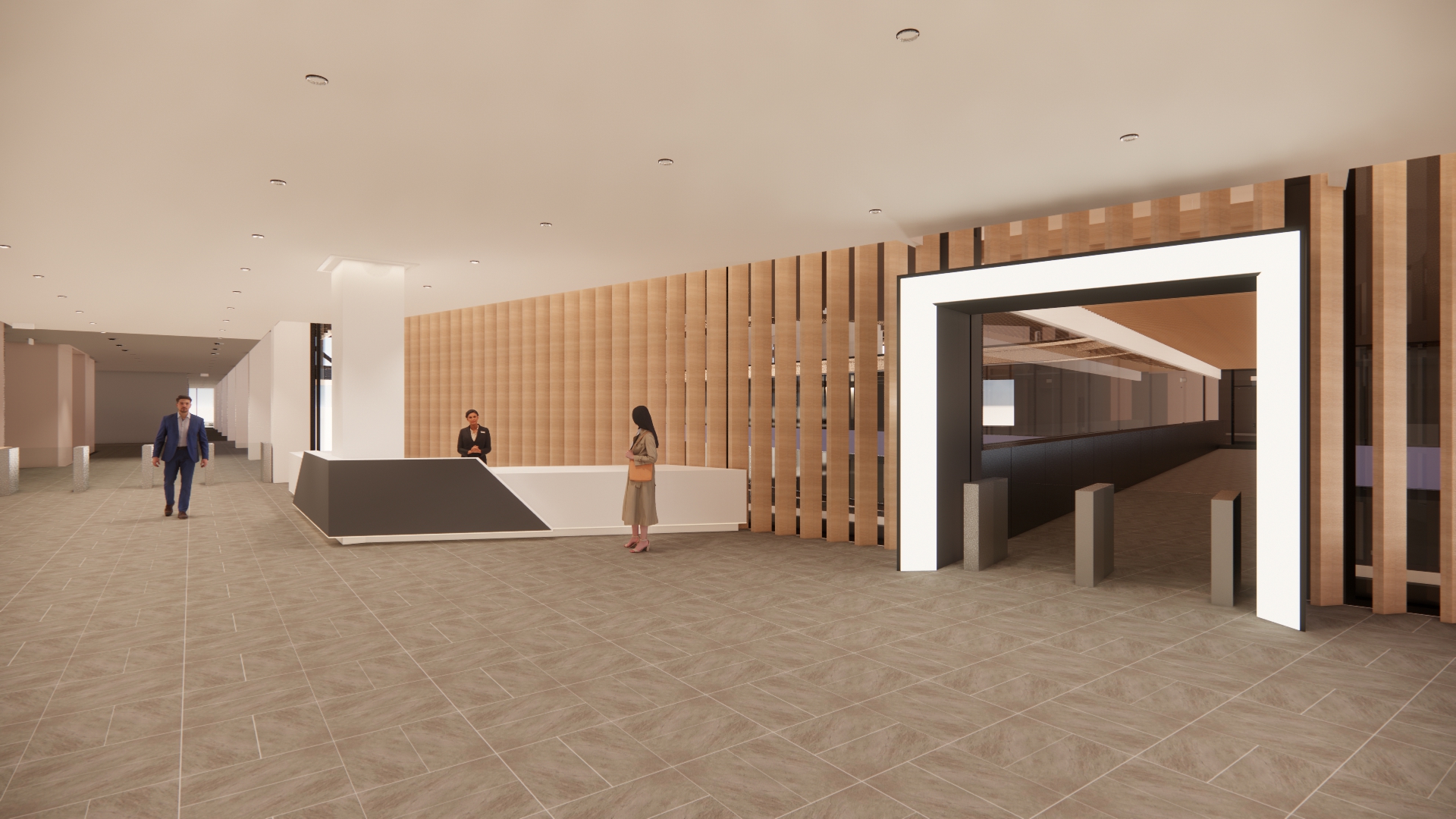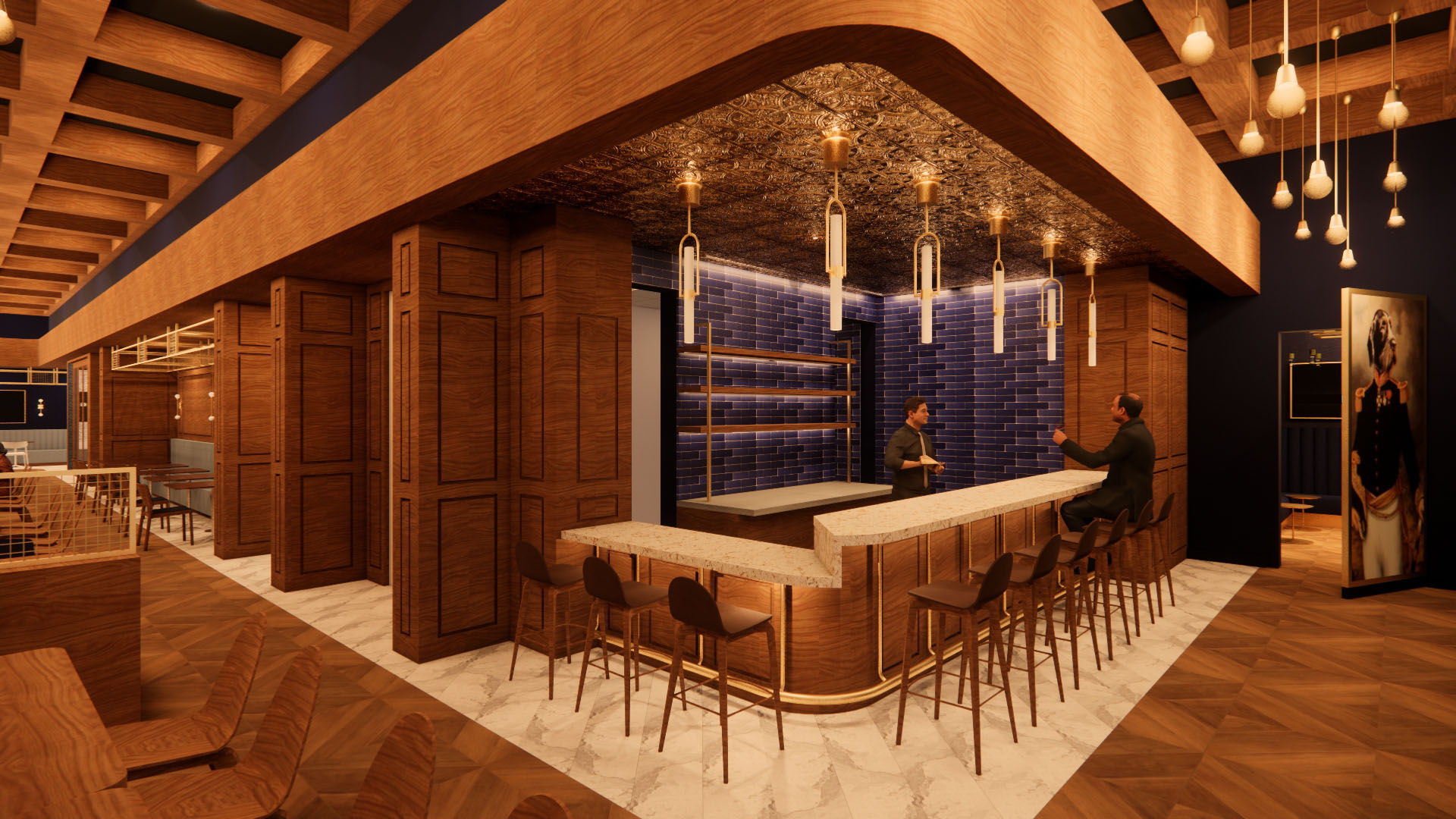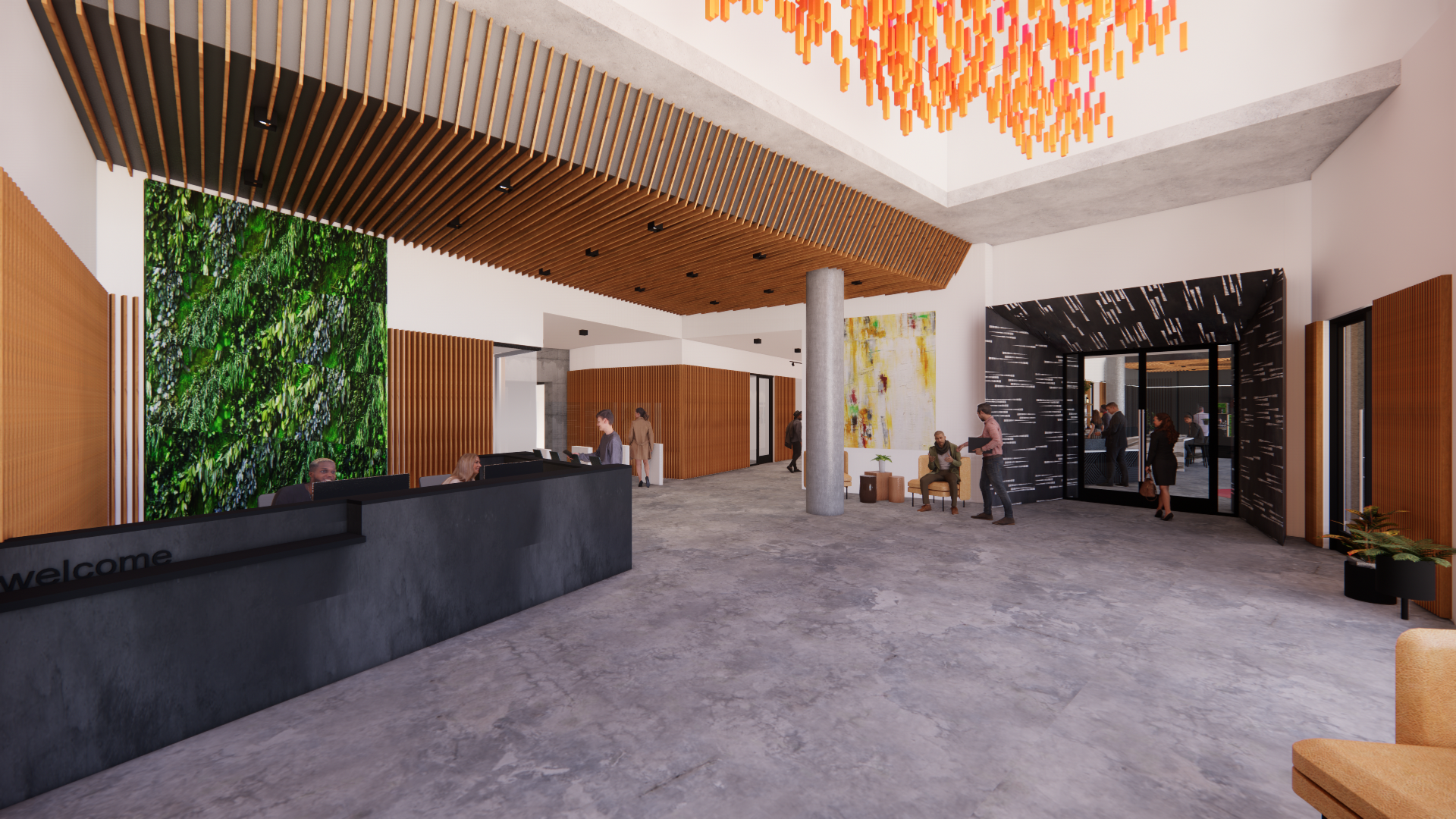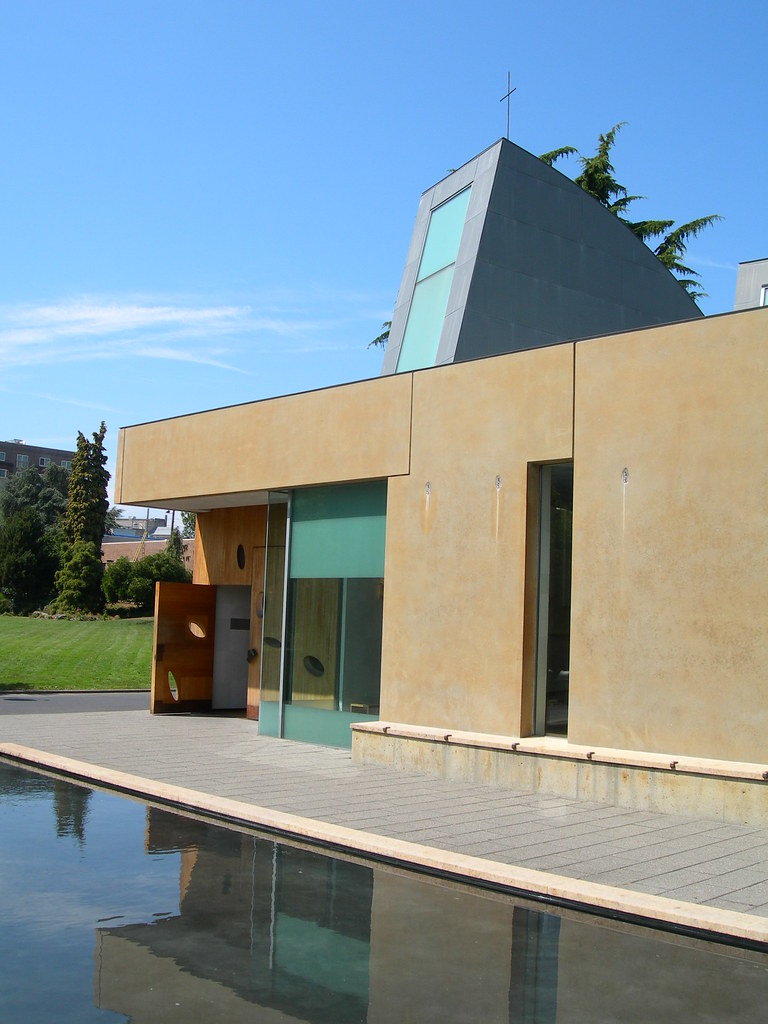
Simply put, The Chapel of St. Ignatius is contemporary architectural poetry. Architect Steven Holl uses form, metaphor, symbol, and structure to put together a compact contemporary masterpiece for the students of Seattle University. Built from the concept of “seven bottles in a stone box,” Holl uses colored baffles and direct light to add swatches of color on the interior of the building by day and glowing patches on the facade by night creating a truly unique a space that is both constantly changing and awe inspiring.
From what I understand of Holl’s design process, the seven colored bottle concept was an early watercolor painting that later informed the overall shape of the exterior. Each of these bottles were then oriented toward a different direction and filled with a different colored baffle so that the time of day dictates the color combination you experience within the chapel. Of course, Holl did not leave that combination up to chance. Instead he coupled each color combination with the religious focus, or in some cases foci, for each room. For instance the narthex of the church has red, the liturgical color for the commemoration of martyred saints, and green, the liturgical color for life and/or the Holy Trinity.
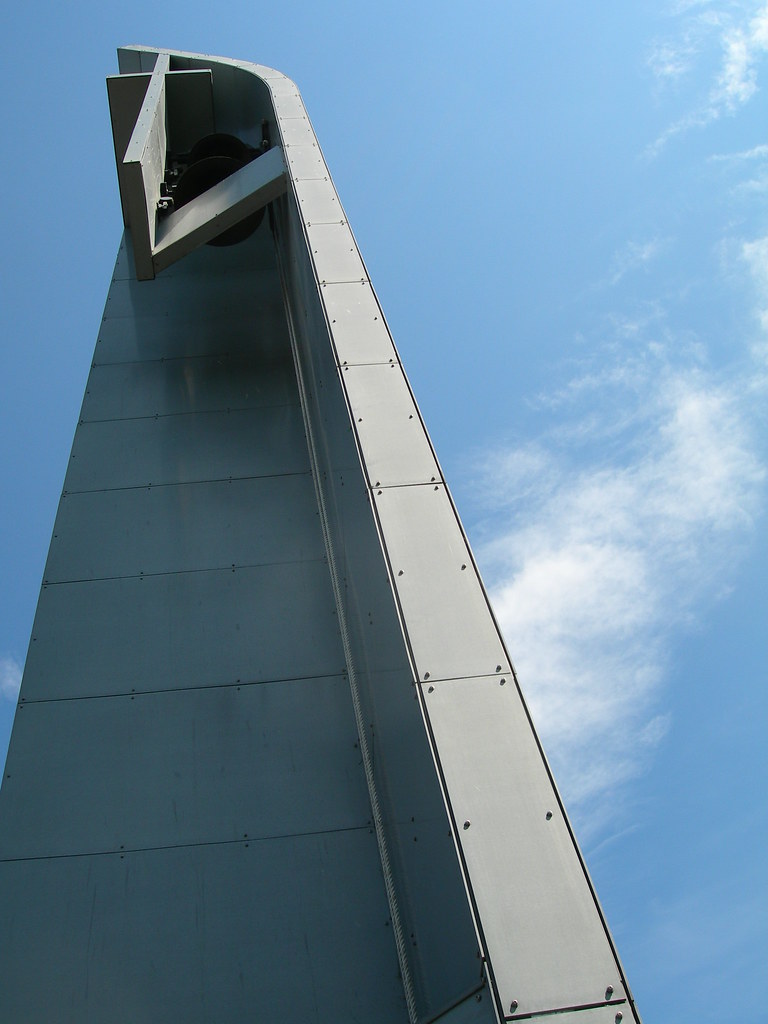

Of course Steven Holl is not the first architect to use light as a central theme within a sacred place. For hundreds of years the beautifully colored stained glass windows of cathedrals, temples and mosques of the old world dazzled the faithful. The difference being that most sacred spaces in Europe are large and in charge where as Holl’s St. Ignatius is humble in comparison. However, there is one contemporary design that The Chapel of St. Ignatius reminds me of, that being Le Corbusier’s Chapel of Notre Dame du Haut in both scale and pallette but achieving very different ends. While Corbusier’s design feels heavy, cave-like and dark, Holl’s work is lighter, airy and more refined. Borrowing the classifications of for columns Corbusier’s design is the Proto-Doric order of chapels where as Holl’s is more of an Ionic order but comes with a price. The Price of Modernity.
One of the aspects of The Chapel of St. Ignatius that caught me off guard was the fire alarms, smoke detectors and exits signs. Though none of the images shown on this page give you a feel for these pieces of design, I was almost sadden at the idea of these “distracting” but necessary things had to be put in. I sometimes forget the everyday items, like exit signs, that architects have to include for safety reasons at the cost of the aesthetics. It makes you wonder though, if given a larger budget, would Holl have made specialty designed exit signs or pa speakers? Of course, I am not sure if I am being nit picky here so if you are curious what I am talking about, please visit my flickr site for a complete set of my photo walk and see if you cannot spot the “modern blemishes” among the patchwork textured walls.
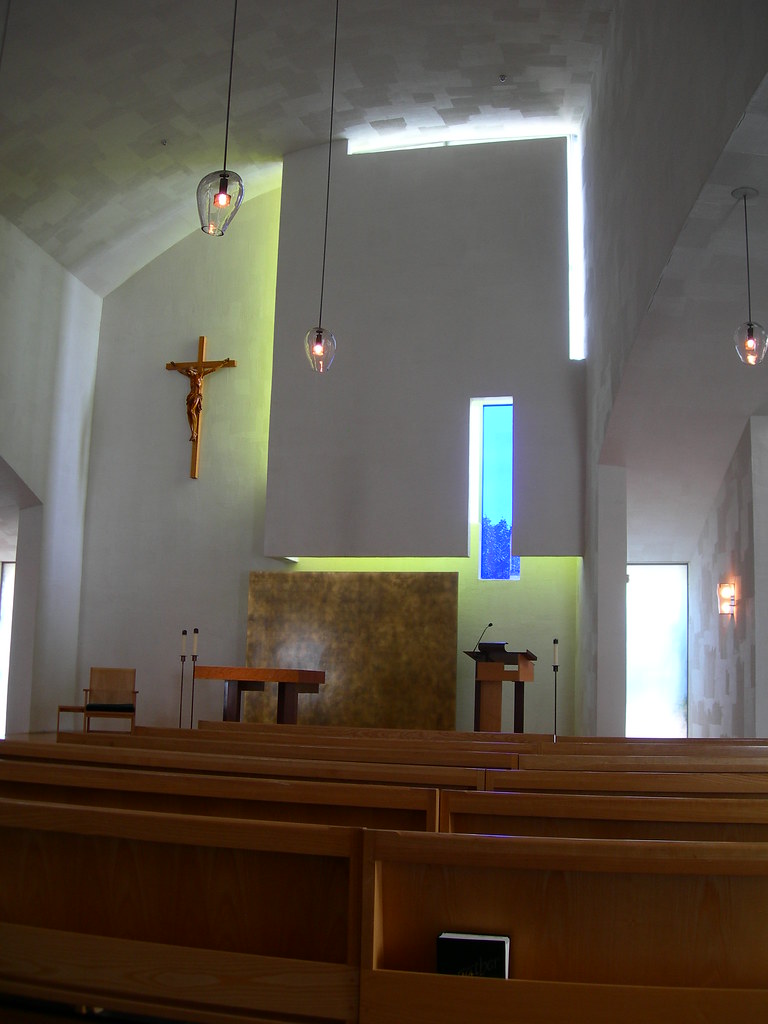
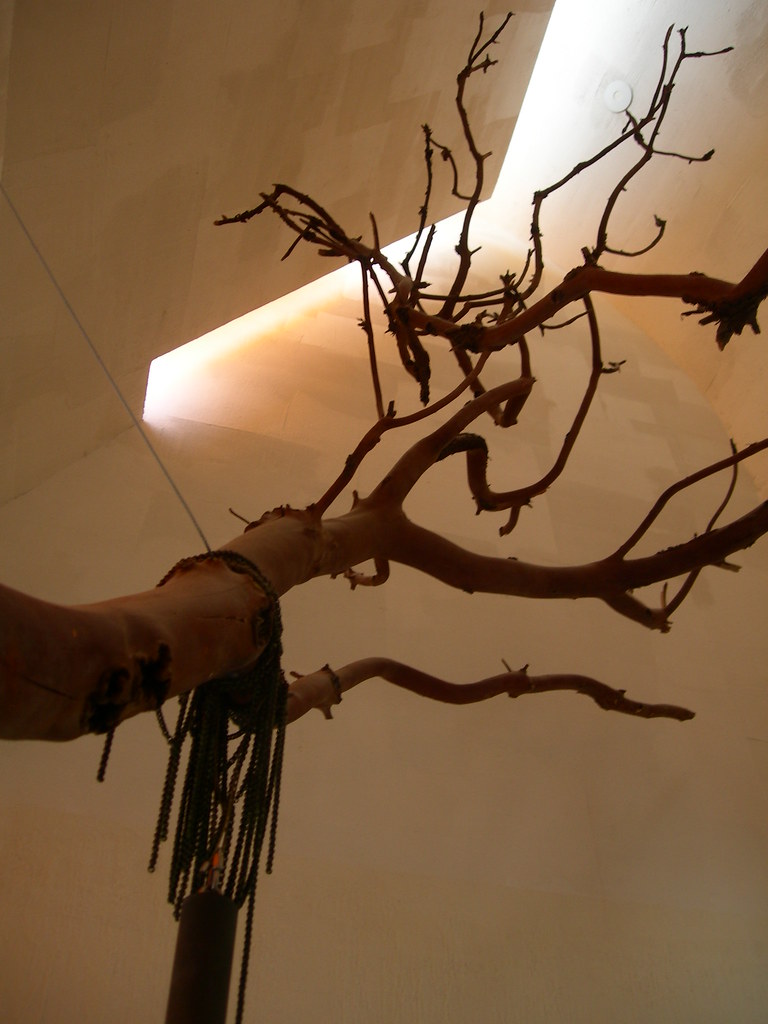
While I was researching the chapel’s history and influences, a few articles I found used the common architectural phrase “a beacon to the community” when describing what the architecture looks like at night. Unknown to most, this is one of my biggest pet peeves because any building with a glass or translucent facade that has their lights on at night will be a “beacon.” Buildings such as churches, libraries, courthouses, etc., already have prominence and should be a community center in their own right and not needing the beacon gimmick. That is not to say that Steven Holl’s Design is not any less beautiful and should not be commended for using the duality of colored baffles for both interior and exterior elements, I just wish that my profession would expand their vocabulary a little.
